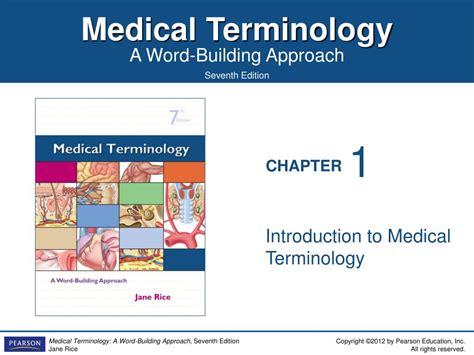The term "otomy" is a suffix used in medical terminology to denote a surgical incision or cutting into a particular organ or part of the body. This suffix is derived from the Greek word "tomē," meaning "a cutting." In medical contexts, "otomy" is combined with roots or prefixes that specify the area of the body where the incision is made, providing a precise description of the surgical procedure. For example, a "gastrotomy" refers to a surgical incision into the stomach, while a "thoracotomy" refers to an incision into the thorax, or chest cavity.
Understanding the meaning and application of the "otomy" suffix is crucial for healthcare professionals, as it enables them to communicate effectively about various surgical procedures. The use of standardized medical terminology, including suffixes like "otomy," facilitates clear and concise communication among medical staff, ensuring that patients receive appropriate care and treatment. Furthermore, familiarity with medical terminology is essential for medical students, researchers, and healthcare professionals to interpret medical literature, understand patient records, and engage in informed discussions about diagnosis, treatment, and prognosis.
Key Points
- The suffix "otomy" denotes a surgical incision or cutting into a specific part of the body.
- It is derived from the Greek word "tomē," meaning "a cutting."
- "Otomies" are named based on the area of the body where the incision is made, such as gastrotomy for the stomach or thoracotomy for the chest cavity.
- Understanding medical terminology, including the "otomy" suffix, is vital for effective communication among healthcare professionals.
- Familiarity with medical terminology is essential for interpreting medical literature, understanding patient records, and discussing diagnosis, treatment, and prognosis.
Common Otomy Procedures

Several otomy procedures are commonly performed in medical practice, each targeting a specific area of the body. A “craniotomy,” for instance, involves a surgical incision into the skull to access the brain, often performed to remove a tumor, relieve pressure, or repair vascular damage. In contrast, a “laparotomy” is an incision into the abdominal cavity, which may be necessary for exploring the abdominal organs, removing tumors, or repairing damaged tissues.
A "tracheotomy" is a surgical procedure where an incision is made in the trachea (windpipe) to create an airway, often performed in emergency situations where a patient's airway is obstructed. A "cricothyrotomy" is a related procedure, involving an incision through the cricothyroid membrane to establish an emergency airway. These procedures highlight the diversity and specificity of otomy surgeries, each designed to address unique medical conditions or emergencies.
Importance of Precision in Medical Terminology
Precision in medical terminology, including the accurate use of the “otomy” suffix, is critical for avoiding misunderstandings and ensuring patient safety. Misinterpretation of medical terms can lead to incorrect diagnoses, inappropriate treatments, and adverse outcomes. Therefore, healthcare professionals must be meticulous in their use of medical language, recognizing the significance of each prefix, root, and suffix in conveying specific medical information.
| Type of Otomy | Description |
|---|---|
| Gastrotomy | Surgical incision into the stomach |
| Thoracotomy | Surgical incision into the chest cavity |
| Craniotomy | Surgical incision into the skull |
| Laparotomy | Surgical incision into the abdominal cavity |
| Tracheotomy | Surgical incision into the trachea (windpipe) |

Evolution of Medical Terminology

Medical terminology, including the use of the “otomy” suffix, has evolved over time, influenced by advances in medical science, technological innovations, and changes in healthcare practices. The incorporation of new terms and the refinement of existing ones reflect the dynamic nature of medical knowledge and the need for precise communication among healthcare professionals. As medical practices become more specialized and complex, the importance of standardized medical terminology in facilitating effective communication and ensuring patient safety cannot be overstated.
The development of medical terminology is a continuous process, with new terms being added and old ones being refined or retired. This evolution is driven by breakthroughs in medical research, the introduction of new treatments, and shifts in healthcare policies. For example, advances in surgical techniques have led to the development of minimally invasive procedures, which have, in turn, introduced new terms and prefixes to describe these innovative methods. Understanding the historical context and ongoing evolution of medical terminology provides a deeper appreciation for the complexity and precision required in healthcare communication.
Challenges in Mastering Medical Terminology
Mastering medical terminology, including the understanding and application of the “otomy” suffix, presents several challenges. The sheer volume of terms, the complexity of their construction, and the nuances of their meanings can be overwhelming, especially for individuals new to the healthcare field. Moreover, the constant evolution of medical knowledge and terminology means that healthcare professionals must commit to lifelong learning to remain current and proficient in medical communication.
Despite these challenges, the rewards of mastering medical terminology are significant. It enables healthcare professionals to communicate effectively, provide accurate diagnoses, and deliver high-quality patient care. Furthermore, a deep understanding of medical terminology facilitates the interpretation of medical literature, enhances professional development, and contributes to the advancement of medical science. As such, investing time and effort into learning and mastering medical terminology is essential for all individuals involved in healthcare.
What does the suffix “otomy” mean in medical terminology?
+The suffix “otomy” denotes a surgical incision or cutting into a specific part of the body. It is derived from the Greek word “tomē,” meaning “a cutting.”
Can you provide examples of common otomy procedures?
+Yes, examples include gastrotomy (incision into the stomach), thoracotomy (incision into the chest cavity), and craniotomy (incision into the skull). Each procedure targets a specific area of the body and is performed for various medical reasons.
Why is precision in medical terminology important?
+Precision in medical terminology, including the accurate use of the “otomy” suffix, is critical for avoiding misunderstandings, ensuring patient safety, and facilitating effective communication among healthcare professionals.


